Introduction:
In the vast and intricate world of microbes, scientists have embarked on an exciting endeavor—replicating wild microbial communities in laboratory settings. These artificial realities allow researchers to delve into the complex interactions and dynamics of microbial ecosystems, unraveling the secrets of these tiny organisms that play crucial roles in our environment, health, and beyond. Join us as we explore the fascinating world of artificial microbial communities and their implications for scientific research.
- Unlocking the Microbial Universe:
Microbes, including bacteria, fungi, and viruses, populate every corner of our planet, forming intricate communities that influence various natural processes. However, studying these complex ecosystems in their natural habitats presents numerous challenges. Artificial microbial communities offer a controlled environment where scientists can observe and manipulate microbial interactions, shedding light on their functions, behaviors, and ecological roles.
- Constructing Synthetic Microbiomes:
Creating artificial microbial communities involves carefully selecting and assembling different microbial species in a laboratory setting. These synthetic microbiomes are designed to mimic real-world microbial communities and replicate their structure and functionality. By manipulating the composition and dynamics of these communities, researchers gain valuable insights into microbial cooperation, competition, and their impact on environmental processes.
- Unraveling Ecosystem Dynamics:
Artificial microbial communities enable scientists to investigate how different species interact and influence one another. By studying the intricate web of microbial relationships, researchers can unravel complex ecological dynamics, such as nutrient cycling, biofilm formation, and disease progression. These insights contribute to our understanding of how microbial communities function in natural environments.
- Applications in Biotechnology and Health:
The study of artificial microbial communities has significant implications for various fields, including biotechnology and human health. By recreating specific microbial consortia, scientists can harness their collective abilities to perform desired functions. Synthetic communities are being explored for applications such as bioremediation, production of biofuels and pharmaceuticals, and even the development of probiotics to enhance human health.
- Challenges and Future Directions:
While artificial microbial communities hold immense promise, there are challenges to overcome. Replicating the complexity and diversity of wild microbial communities accurately is a formidable task. Additionally, understanding the intricate interplay of numerous species and environmental factors is a continuous area of research. Future advancements in technology, such as high-throughput sequencing and computational modeling, will enhance our ability to construct and study artificial microbial communities more effectively.
Conclusion:
Artificial microbial communities provide scientists with a powerful tool to explore the hidden world of microbes and decipher their intricate interactions. By replicating wild microbial communities in the lab, researchers gain valuable insights into the fundamental processes that shape our environment, influence human health, and drive innovation in various industries. As we continue to unlock the mysteries of these miniature worlds, artificial realities offer a pathway to deepen our understanding of microbial ecosystems and leverage their potential for sustainable solutions and improved human well-being.
